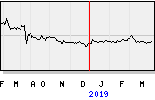
Leiden, The Netherlands, August 2, 2012. Biotech company Pharming Group NV ("Pharming" or "the Company") (NYSE Euronext: PHARM) today announced a strategic restructuring plan of its Dutch operations designed to accelerate the Company's path to sustainability and future profitability. The proposed plan, which necessitates a request for "collective redundancies", was filed with the Dutch authorities (UWV Werkbedrijf, in accordance with the "Wet Melding Collectief Ontslag"). The process entails a formal procedure, required when there is a need for downsizing of an organisation by 20 staff or more. The plan continues the restructuring initiated in June by the closure and subsequent sale of Pharming's US facility.
Post the completion of this restructuring, the organisation will have maintained full capabilities to execute technology transfers of platform technology and product processes as well as retaining all product development associated know-how. Furthermore, Pharming will continue to participate in existing collaborative product development and to pursue potential partnerships in the future.
The Company will thus maintain sufficient personnel to achieve these strategic objectives by aligning the staffing resources and potential partnering requirements of the organisation with its strategic needs post the anticipated finish of Study 1310 (our US pivotal trial) and submission of the Ruconest BLA to the FDA .
As a result of the restructuring, the Company aims to reduce costs by approximately € 3.5-5 million annually over the coming 12-18 months. The timing of the plan will be influenced by external (e.g. authorities and business development activities) and internal influences (operational deliverables).
Pharming's Works Council has yet to advise on the restructuring plan, according to the Works Councils Act art 25. Following the decision of the authorities and the advice of the Works Council, the plan will be implemented.
"This restructuring will allow Pharming to implement the next steps in its business strategy: transitioning from a mainly internal research driven model to a market driven, externally focused, collaborative research and development model", said Sijmen de Vries, CEO. "It is clear that Pharming must adopt a leaner, more cash efficient business model if it is to survive in the longer term and we firmly believe that these actions will help to re-position Pharming to create value for our stakeholders."
RUCONEST® Phase III Study
Pharming is conducting a Phase III clinical study with RUCONEST® under a Special Protocol Assessment (SPA) that is intended to support the submission of a Biologics License Application (BLA) to the U.S. Food and Drug Administration (FDA). RUCONEST is being evaluated for the treatment of acute attacks of angioedema in patients with HAE in an international, multicenter, randomized, placebo-controlled Phase III study at a dosage strength of 50 U/kg with a primary endpoint of time to beginning of relief of symptoms. Santarus has licensed certain exclusive rights from Pharming to commercialize RUCONEST in North America for the treatment of acute attacks of HAE and other future indications. Under the terms of the license agreement, a $10 million milestone is payable to Pharming upon successful achievement of the primary endpoint of the Phase III clinical study. The study is expected to be completed by the end of the third quarter of 2012.
About RUCONEST® and Hereditary Angioedema
RUCONEST® (INN conestat alfa) is a recombinant version of the human protein C1 inhibitor (C1INH). RUCONEST is produced through Pharming's proprietary technology in milk of transgenic rabbits and is approved in Europe for treatment of acute angioedema attacks in patients with HAE. RUCONEST® is an investigational drug in the U.S. and has been granted orphan drug designation for the treatment of acute attacks of HAE, a genetic disorder in which the patient is deficient in or lacks a functional plasma protein C1 inhibitor, resulting in unpredictable and debilitating episodes of intense swelling of the extremities, face, trunk, genitals, abdomen and upper airway. The frequency and severity of HAE attacks vary and are most serious when they involve laryngeal edema, which can close the upper airway and cause death by asphyxiation. According to the U.S. Hereditary Angioedema Association, epidemiological estimates for HAE range from one in 10,000 to one in 50,000 individuals.
